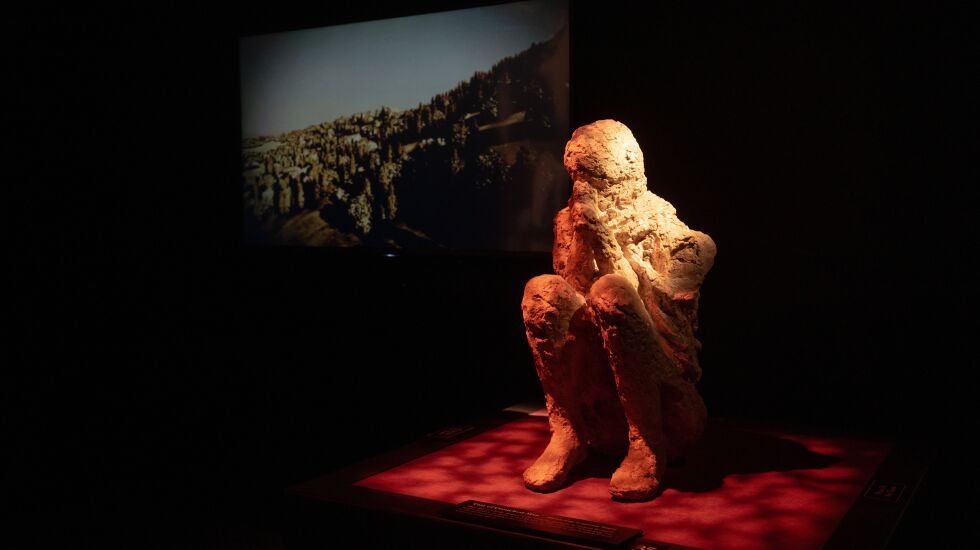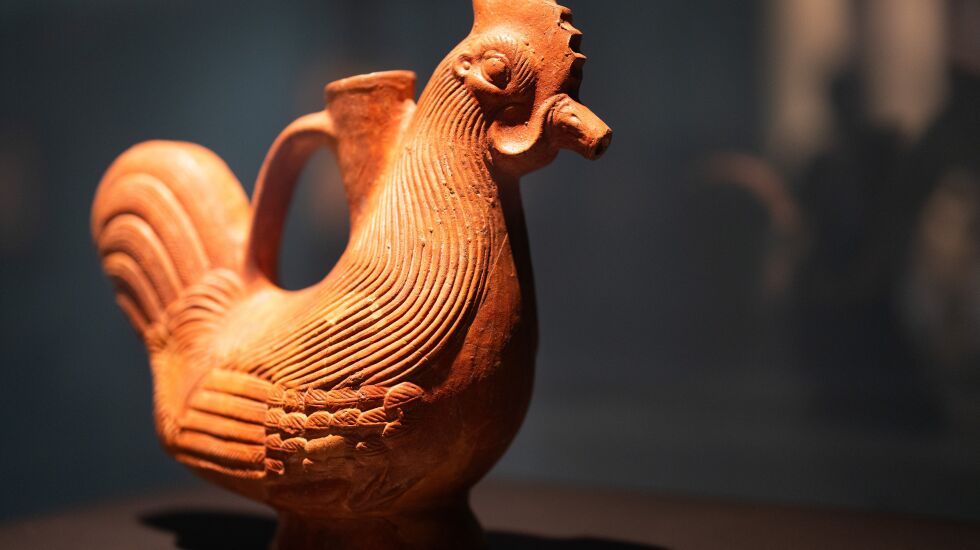
The scrawled etching in stone reads: “I’d like to be the gem in your ring for just an hour to get the kisses you give when you press the seal.”
The ancient Pompeii graffiti is a reminder of how little has changed in the last 2,000 years or so — think of the far-less-creative tourists recently caught carving their initials into the walls of Rome’s Colosseum.
There are intriguing links to the present scattered throughout the Museum of Science and Industry’s popular exhibit “Pompeii: The Exhibition,” which the museum announced Thursday is being extended through Jan. 15, 2024. It had been set to close in early September.
It’s hard to look at the casts of people — frozen in contortions of agony as ash rained down from Mount Vesuvius on Aug. 24, 79 A.D. — and not think of the tragic deaths on Maui.
By most accounts, that day all those centuries ago began like any other in the culturally rich Italian city of Pompeii, about 14 miles southeast of Naples. The ground trembled, but that wasn’t anything out of the ordinary for folks living near an active volcano. But then Vesuvius erupted, spewing 200 tons of rock, ash and gas per second. Pompeii was buried beneath about 14 feet of debris. Thousands died.
It wasn’t until the mid-1700s that excavations began to uncover the ancient civilization, much of it perfectly preserved.
“That is the irony of the eruption: It was devastating. It happened within 24 hours — that whole part of the countryside had been covered and destroyed ... and yet, it wound up preserving all of these amazing artifacts that are still being discovered to this day,” said Voula Saridakis, a curator at the museum and a historian of science and technology.

There are marble statues of toga-clad dignitaries, bronze gladiator helmets encrusted in ancient verdigris, a hefty bronze pan that looks big enough to fry up a dozen eggs all at once. And among the 150 or so artifacts on display are the most delicate of bronze implements: a slender hairpin with a snake’s head at one end; a handful of scalpels and a bronze suction cup that, the exhibition tells us, was used to “remove liquids they believed caused the patient discomfort. These were also used to heat diseased areas and in bloodletting.”

Graffiti, we are told, was abundant in Pompeii — often concerning the attributes of a favored gladiator. Celadus was, according to one wall scratching, “the man the girls sigh for.”
The exhibit also includes three pieces unveiled Thursday, one of which is a terracotta wine jug in the shape of a rooster — an intricately inscribed piece that would have been used for special occasions, Saridakis said.

Pompeiians likely would have chuckled at how many present-day Americans view sex. Entering the erotic imagery section of the exhibition is a little like stepping into an adults-only section in an old video rental store: “Attention! This area contains adult content, themes and artifacts which may not be suitable for all guests. Parental Guidance is suggested.”
“Prostitution and brothels were widespread throughout the [Roman] Empire, governed by laws and taxed by the Emperor Caligula. ... It was common for sex acts and sensual imagery to be depicted in the home as well as the brothel. Households contained small oil lamps, good-luck charms or statuettes with erotic motifs,” the exhibition tells us.

The most arresting part of the exhibit features a dozen or so casts of those caught in the scalding rain: a dog, contorted and struggling in vain to free itself from a chain; a man crouching with something unidentifiable, perhaps a cloth, pressed against his face; the skeleton of an 8-year-old boy who was trying but failed to find shelter.
About 146,000 people have visited the exhibition since it opened in late February, museum staff say.
Ticket prices to the exhibit (which do not include the cost of general admission to the museum) are $18 for adults; $14 for children; and $9 for members.







